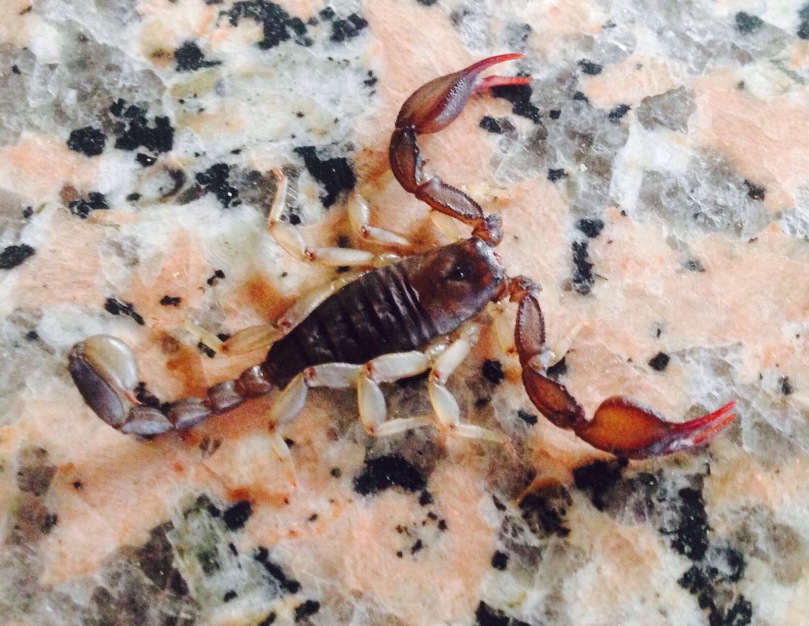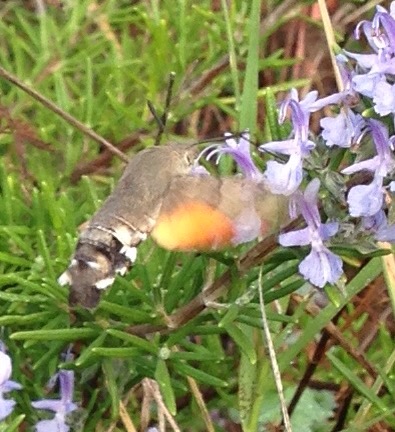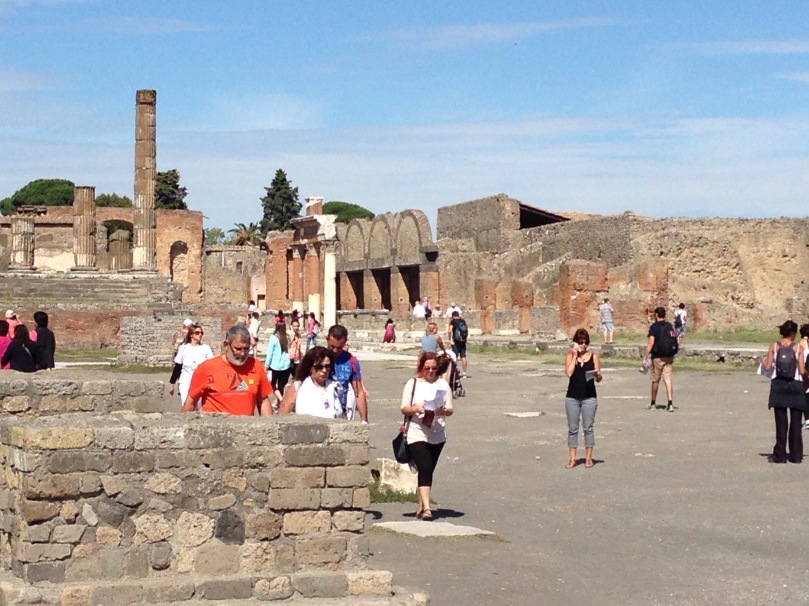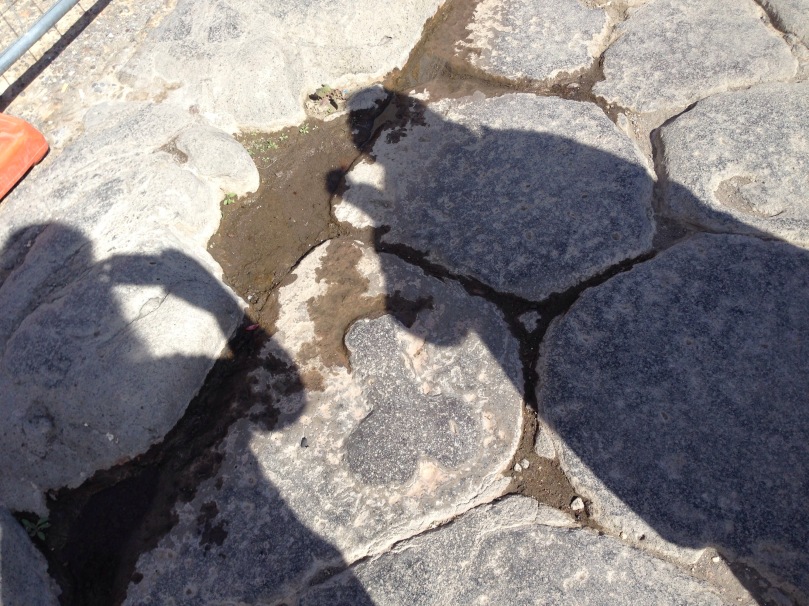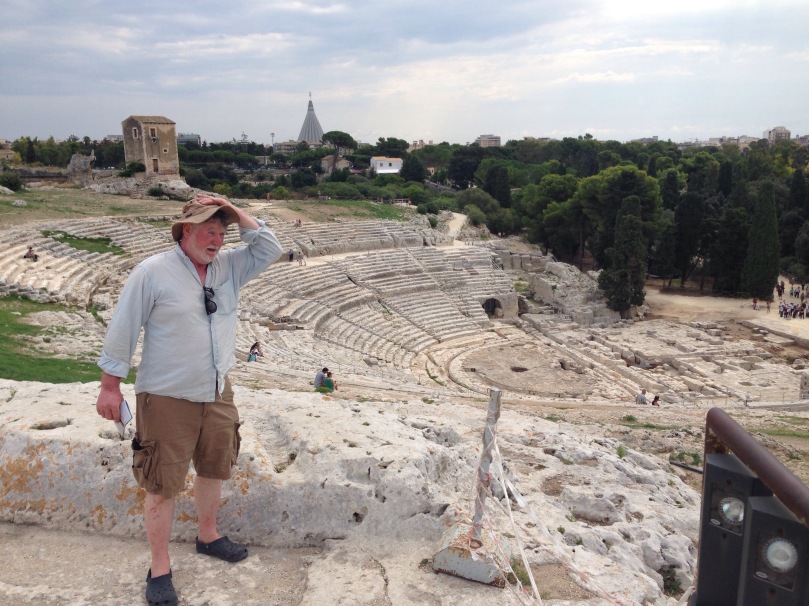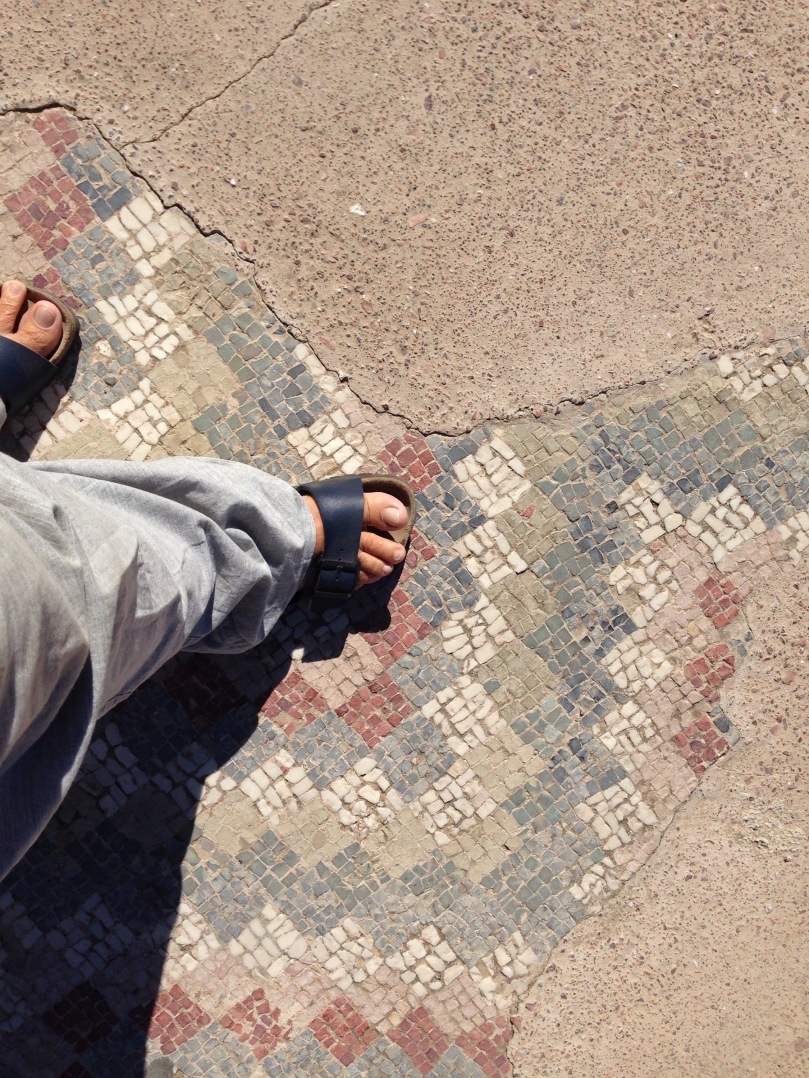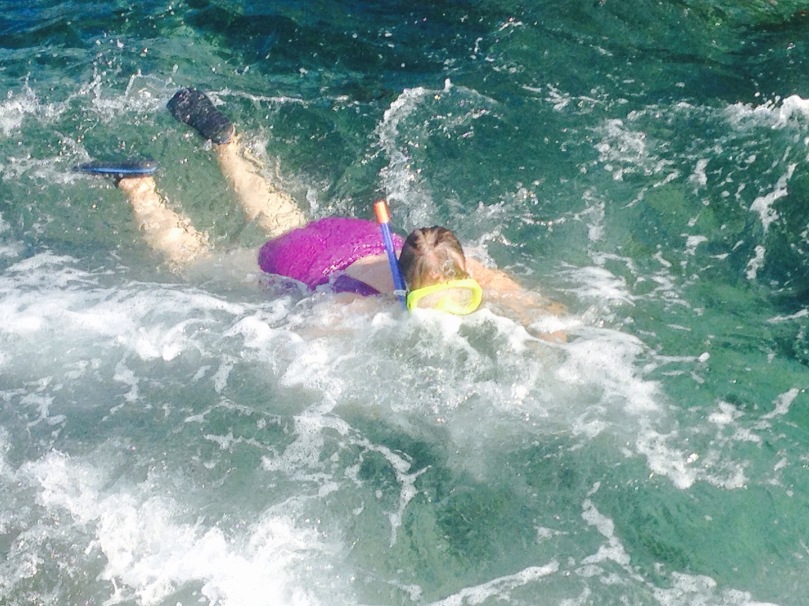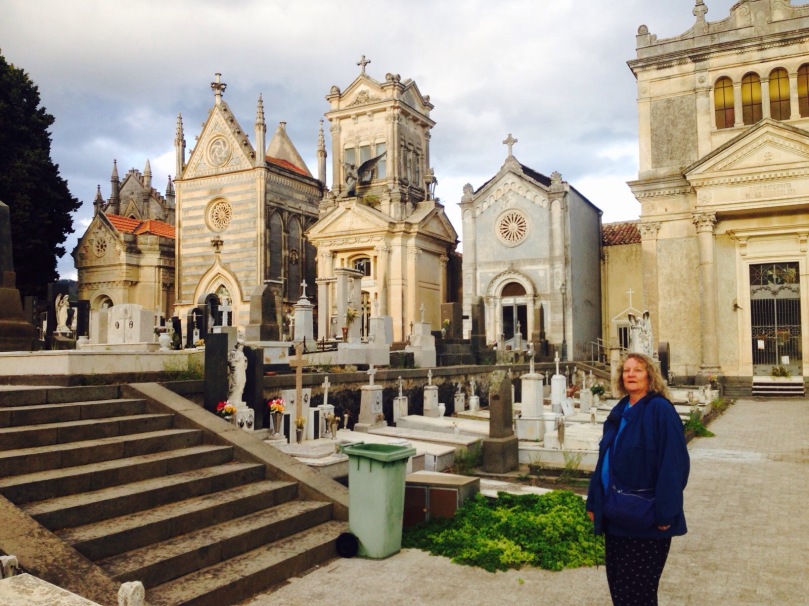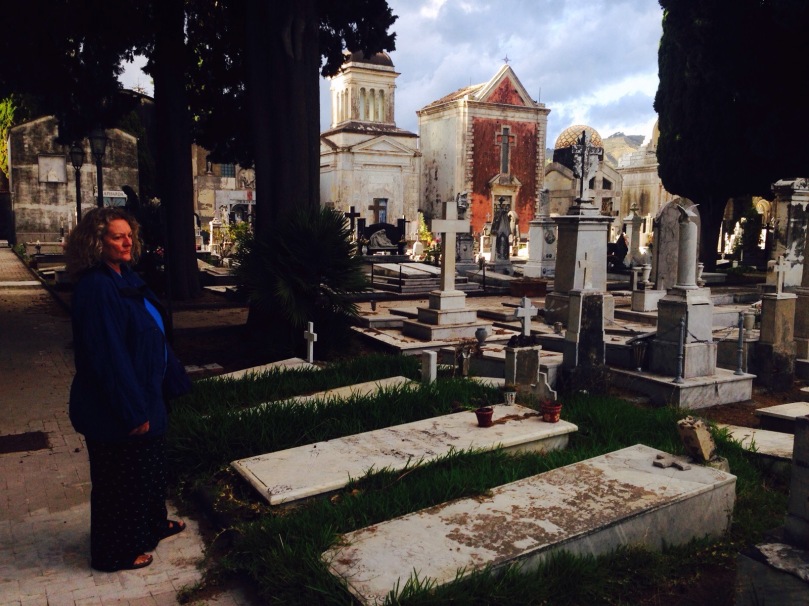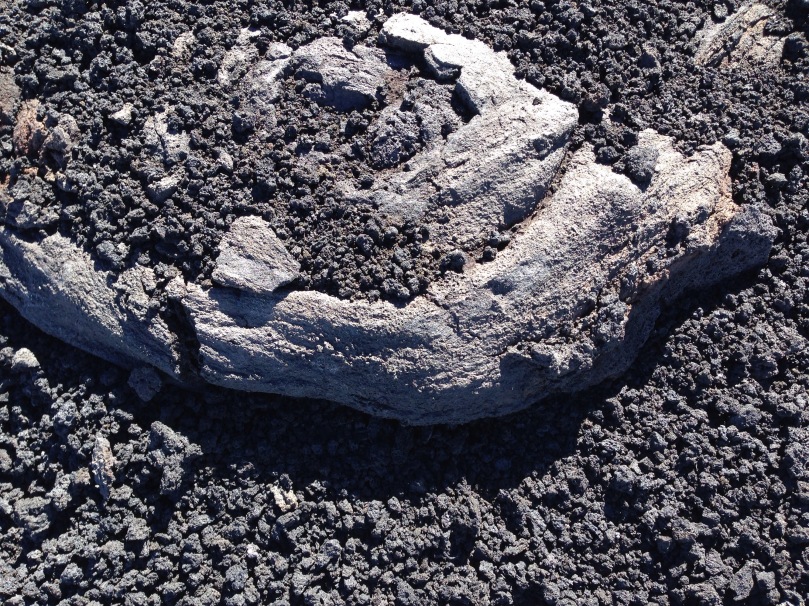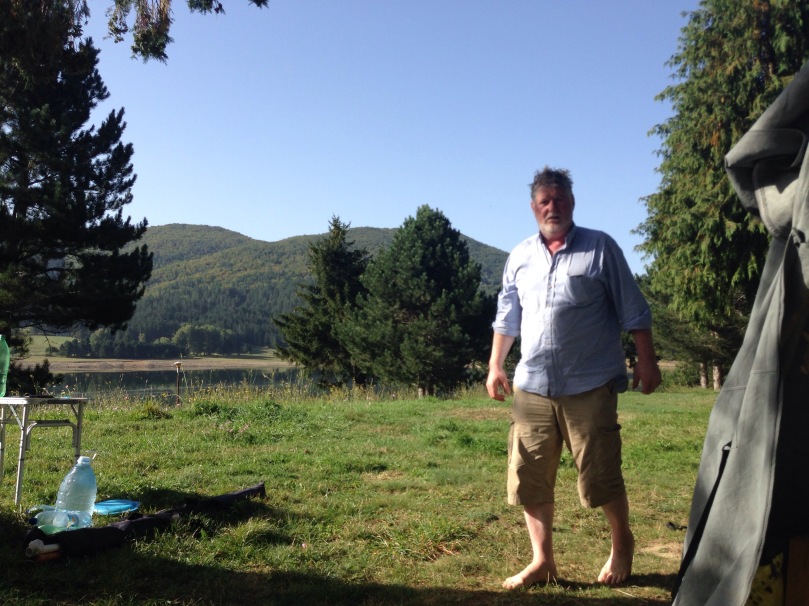‘This can’t be it can it?’ I wonder anxiously as we drive down a barely navigable back street in central Naples in search of our pre-booked B&B.
 We’ve read so many bad ‘reviews’ of Naples on Tripadvisor and its ilk, and have decided to come anyway, that I am nervous about our upcoming experience in this city of 5 million plus people.
We’ve read so many bad ‘reviews’ of Naples on Tripadvisor and its ilk, and have decided to come anyway, that I am nervous about our upcoming experience in this city of 5 million plus people.
But it was it, and there was no need for nerves (which just goes to show you should no more believe what you read on the internet than in the newspapers).
The unpromising looking metal and frosted glass front entrance of our B&B, 44 Soriano, is smack up against the old black paving slabs of the alley. But it opens out into an intriguing if slightly dark courtyard from which you can look up the centre of five floors of this 17th century converted palace.
Inside the metal doors are ancient wooden ones 10 ft high, 6ft wide and a good 6 inches thick. They are kept open and not in general use.
An antiquated caged lift into which you have to feed 10 cents before it will move takes you up to a huge apartment stretching across the rooves of two adjacent buildings and down into number 46.
It’s full of collections put together by the current manager Gabriel’s grandfather, to whom the apartments belong and who used to live there. Old cameras, bottles, books, miniatures, fans, you name it. (It later transpires that Naples is home to an array of miniature model shops, mostly designed to build detailed and locally slanted nativity scenes).
The bedrooms are less fanciful but still individual and charming. Breakfast is taken on the roof. All is calm and relaxed.
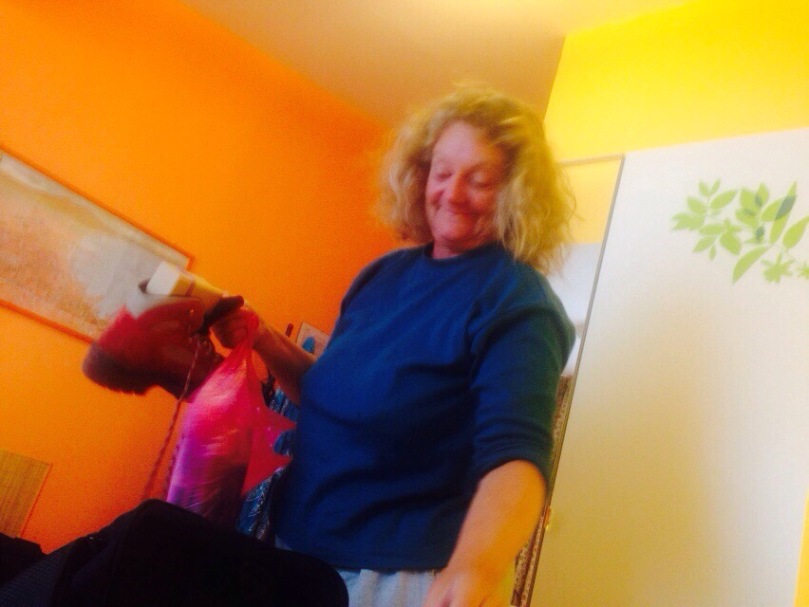 It turns out that this courtyard and palace arrangement is very much par for the course in the central old part of Naples, which is full of such hidden beautiful buildings, not to mention much older ones. You might find yourself leaning on what turns out to be the 2,000 year old remains of a Greek pillar, eating supper under a brick and mortar Roman arch or bumping into a Donatello marble bas relief in a dusty looking church.
It turns out that this courtyard and palace arrangement is very much par for the course in the central old part of Naples, which is full of such hidden beautiful buildings, not to mention much older ones. You might find yourself leaning on what turns out to be the 2,000 year old remains of a Greek pillar, eating supper under a brick and mortar Roman arch or bumping into a Donatello marble bas relief in a dusty looking church.
And, yes, there is a lot of graffiti in Naples, much of it of the scrawled type although interspersed with some genuine works of art. But to my mind it does little to detract from and often adds to the vibrant and lively atmosphere that’s present at any time of day and well into the night in the old area of Naples.
 And, yes, there are a lot of people, some of them, as in any populous place, up to no good. But so many more can’t wait to share freely the bounty that is their lovely city, or just look out for you.
And, yes, there are a lot of people, some of them, as in any populous place, up to no good. But so many more can’t wait to share freely the bounty that is their lovely city, or just look out for you.
Like the caretaker at the school of fine arts who, seeing our interest, invited us in to inspect the works in progress in two sculpture studios.


 Like the young man who, speaking no English, went to great pains to explain that in the place we had just parked we were liable to a hefty on the spot police fine if we stayed more than 10 minutes.
Like the young man who, speaking no English, went to great pains to explain that in the place we had just parked we were liable to a hefty on the spot police fine if we stayed more than 10 minutes.
Like the distinguished looking señora who, seeing us struggle with a less than complete tourist city map, stopped to make sure we were on the right track.
Like the group of young lads on the Metro platform, who were intrigued to know where we came from then engaged us in excited chatter about football before being unceremoniously kicked out by the local transport police; I’m guessing they’d jumped the barrier.
At the posh seafront part, you can even go swimming as huge fast boats rush past, though you might want to take care not to swallow any of the water.


And the pizzas…
 Naples is vast, stretching right along the sparkling Bay of Naples to Vesuvius and Pompeii, so any two-day visit is going to be the merest snapshot. Which is great, because that gives us every excuse to go there again.
Naples is vast, stretching right along the sparkling Bay of Naples to Vesuvius and Pompeii, so any two-day visit is going to be the merest snapshot. Which is great, because that gives us every excuse to go there again.
Can’t wait.

40.595117
14.870637
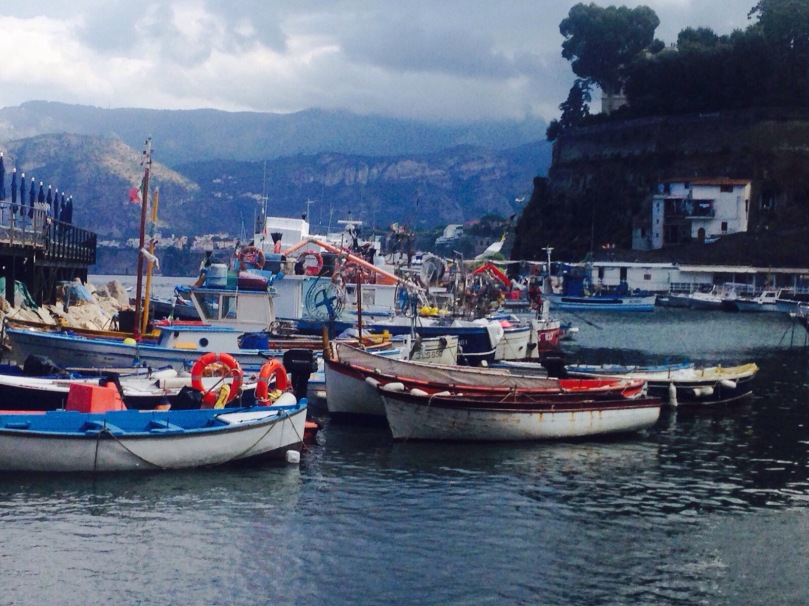 We get severely stung at a hilltop snack bar, which is little more than a shack run by a seemingly friendly and hospitable family. Our own fault for ignoring the warning signs but annoying and expensive all the same. Takes the shine off the view a bit.
We get severely stung at a hilltop snack bar, which is little more than a shack run by a seemingly friendly and hospitable family. Our own fault for ignoring the warning signs but annoying and expensive all the same. Takes the shine off the view a bit.  You can also bathe in the same fabulous sea. When we arrive in the dark, threatening to swim nevertheless as it’s so hot, the campsite owner cautions us to take care as the seas, ‘she is angry tonight.’
You can also bathe in the same fabulous sea. When we arrive in the dark, threatening to swim nevertheless as it’s so hot, the campsite owner cautions us to take care as the seas, ‘she is angry tonight.’ 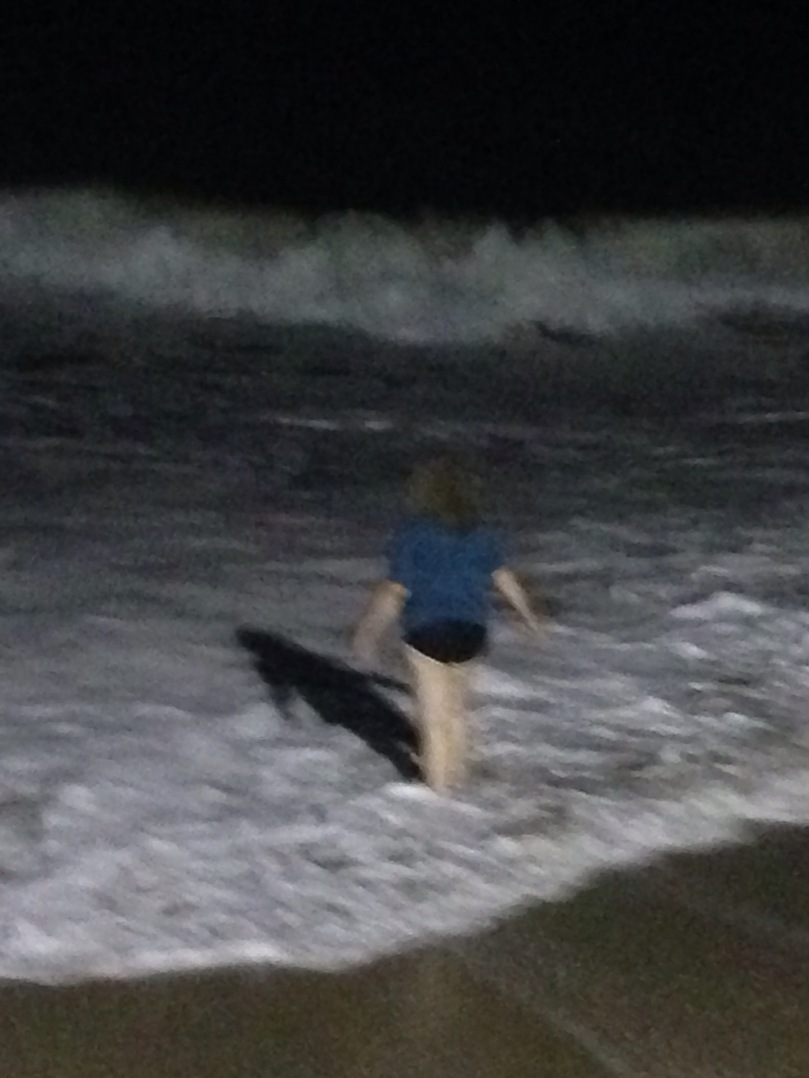 He’s right, so we only venture in up to our knees, but you can feel the pull of the waves even so. Next day we swim in the crashing rollers and get tumbled on the sand and pebbles for our pains.
He’s right, so we only venture in up to our knees, but you can feel the pull of the waves even so. Next day we swim in the crashing rollers and get tumbled on the sand and pebbles for our pains. 



